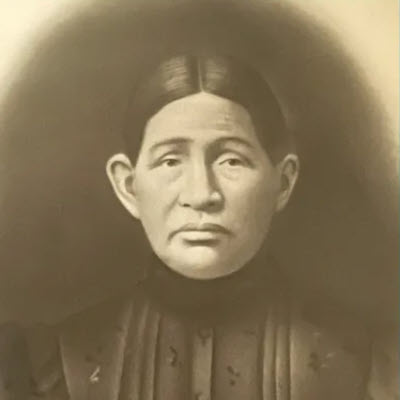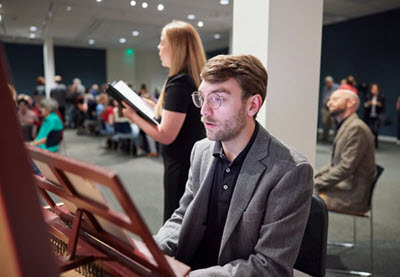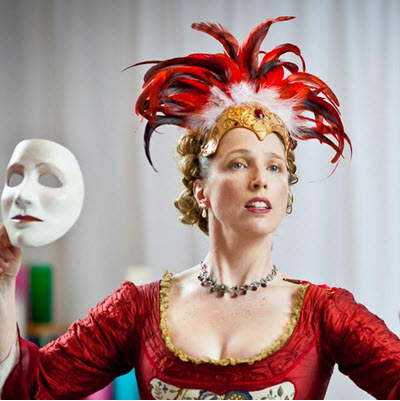by Simon Mundy
Published June 24, 2024
Every variety of performance that happens within its walls, grounds, and sky is gathered under the title Versailles Spectacles
The ancien régime is a starting point for repertoire rather than a cultural era to recreate
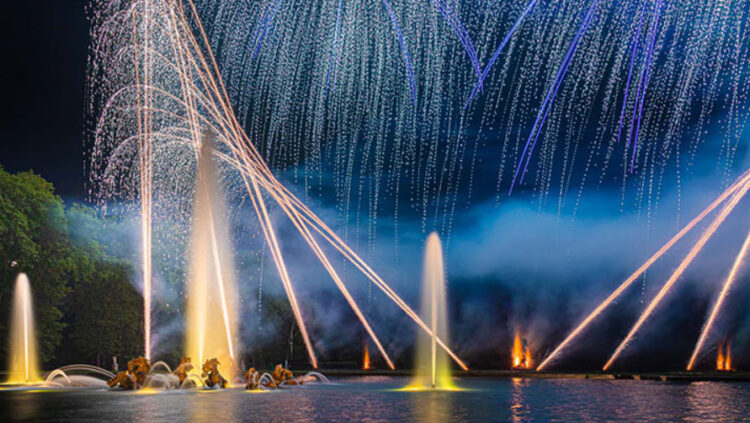
Celebrating its 400th anniversary throughout 2024, the Château de Versailles is the expression of a political vision with extraordinary consequences for music’s development. It was a place where the king’s court could enjoy spectacular entertainment. The fun was extravagant and political but still, above all, fun.
Those running the 17th- and 18th-century versions of the palace would have found Laurent Brunner’s sort of impresario quite familiar. Director since 2017 of the modern-day Château de Versailles Spectacles, Brunner is in charge of every variety of performance that happens within the palace’s walls and grounds. The Spectacles controls the fireworks and the fountains, the drone light shows and costumed ball evenings (les Fêtes galantes), the choreographed equestrian performances, the concerts in the chapel and salons, and the in-house Opéra Royal.
Officially, it’s described as a “private subsidiary of the public establishment of the museum and the national domain of Versailles” and that “Château de Versailles Spectacles’ mission is to perpetuate the tradition of spectacle and performing arts through exceptional events.”
In programming the musical end of the business, Brunner has spoken of music that “has a historical link with France and is part of this international and European Baroque that we cherish.” For the anniversary year, that tradition has been updated so the flurry of spectacle is far reaching, as much contemporary as historical.
This season includes eight staged opera productions and 14 in concert — from the familiar Platée, L’Orfeo, and The Fairy Queen to delicious but obscure works like François Colin de Blamont’s opera-ballet Les Fêtes grec et romanes (premiered at Versailles in 1723) and Antonio Vivaldi’s serenata Gloria e Imeneo, commissioned in 1725 to celebrate the marriage of Louis XV.
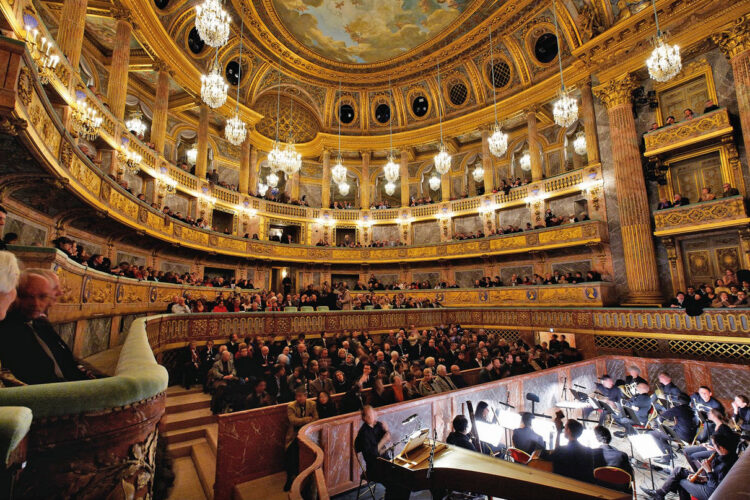
Earlier this month, in the jewel-box Opéra Royal, the Spectacles produced a staged pastiche opera, Duel de Stars, headlined by star mezzo-soprano Cecilia Bartoli and movie star John Malkovich. The plot involves composer Nicola Porpora and castrato Farinelli, with greatest-hit tunes by the likes of Handel, Vivaldi and Monteverdi. Brunner justifies the Spectacles’ putting Richard Wagner’s four-opera Ring cycle on its stage, across several seasons, by linking the twin obsessions of Bavaria’s King Ludwig II: the palace of Versailles and the music of Wagner. This season the Opéra Royal presented Die Walküre and Seigfried in concert.
Much more expected are the four full ballets, costumed balls, and concerts sacred and secular, such as Marc-Antoine Charpentier’s Mass for four choirs, where the young French composer, just home from an Italian sojourn in the 1660s, brought back music infused with the sounds and styles of Rome and Venice. (Charpentier’s Mass will be recorded live for the Spectacles’ own record label.)
In the warmer months, mindful of attracting another generation to the palace (and selling gobs of tickets), the Spectacles will present nights with DJs — bringing electro music, flashing lights, and the club scene onto the ancient grounds.
Grandeur and Artifice
The most famous and most copied palace in Europe started modestly. In March 1624, King Louis XIII of France travelled through the woods to spend his first night in the newly finished hunting lodge he had acquired: a few miles south of his main palace, which was just outside Paris in St. Germain-en-Laye. Until then, the official hunting lodge for the French kings had been at Fontainebleau, a long way to the southeast, but by Louis XIII’s time that had grown into a major palace in its own right and this rather serious, stuttering, and stern monarch of 23 (he had a lot to be serious about) wanted a less complicated and formal place for his relaxation. The choice of the hilltop at Versailles was perhaps taken for nostalgic reasons. His father, Henry IV, had brought him hunting there when he was a lad of six. The early 1620s were turbulent in France, with a series of factional and religious rebellions; A pleasant but not overly grand residence in the countryside, firmly within the king’s personal lands, was an attractive retreat.
Like many kings, Louis found the stag hunt to be his most addictive pastime. Versailles was well served with game. It was also away from the constant scrutiny and gossip of his palaces, and, for the almost certainly gay Louis, the relative seclusion added to its appeal. Hunting was for the daytime, though, and in the evenings the rural 15-room manor house was the perfect setting for Louis to indulge his musical side. He was a fine lutenist and a competent composer, who enjoyed exploring the links between dance, music, philosophy and, as a metaphor for all of them, fencing; many of the dance routines from Louis XIII’s court and the musical rhythms that go with them reflect the formal patterns of swordsmanship. From his 30s on, he was not a well man, though, and by the time he died, at age 41, his body was a painful mess of ulcers. The previous fall, he had at least managed a few days in peaceful Versailles.
His son, only five when his father died, grew up to have a very different ambition for the lodge. Louis XIV did not visit it properly until he was in his early teens but after that it became a favorite haunt. In 1661, at almost the same age as his father had been when he had embarked on new construction, Louis XIV began to transform it. Down came the manor house, up went the palace, much of it to Louis’ own specifications. The little village of Versailles was moved out of the way of the new grand avenues — and out of sight of the king’s windows. Some 20 years later, the new palace replaced St. Germain-en-Laye and Fontainebleau as the main residence of the court, and so it remained until the Revolution toppled his grandson from the throne at the end of the following century.
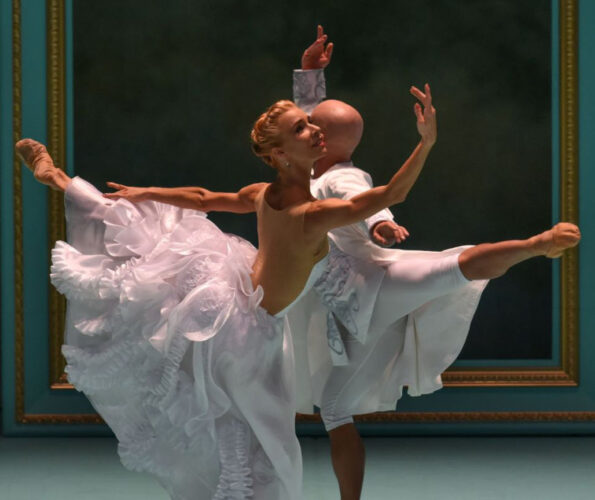
After Louis XIII’s private world of music and dancing at Versailles, the Sun King’s new palace was expanded, inflated, and became, in the true sense of the word, spectacular. Even more than his father, Louis XIV loved to dance — taking daily dance lessons — and he love to play, though he preferred the guitar to the lute (and spoke fluent Spanish, too). But in the new Versailles the entertainments were put to the service of very public regal display. This all helped corral the aristocracy under the king’s watchful eye in what’s been likened to an aristocratic Disneyland.
As Spectacles’ director Brunner explains, “It was meant to be the showpiece of the new Rome but, whereas Italy’s princes put on a great show in the gardens of their villas for a few people, Louis XIV looks outward. Versailles was made for his mistresses but mainly to present himself as Apollo.” From as early as the 1660s, up to 10,000 people would attend Louis’ events, whether dancing, games, concerts, or opera — as many as three each week. (More recently, the Château de Versailles has attracted some seven million visitors a year, making it France’s third-most popular cultural attraction, after EuroDisney and Notre-Dame Cathedral.)
From the middle of Louis XIV’s reign onward, everything in the palace was about grandeur but it was, and is, all about artifice, too. At Versailles you might think you know what you are seeing but most of the time the reality is as contrived as the reflections in the palace’s famous Hall of Mirrors, finished in 1682.
‘The opera leaves a deficit, but I sell millions of tickets for the fountains, balls, and concerts’
The gilded theater, now the Opéra Royal de Versailles, was not built until 1770 and even then, it was not used for opera at first. All those great operas of Lully, Rameau, and others were initially performed either in a pavilion in the palace courtyard or in the stables. The vast equestrian arena, a couple of hundred yards downhill from the palace, had to be thoroughly cleaned out for the staging and seating to be erected for each production.
Louis XV had the theater built as a wedding breakfast venue for his sons, rather than theater. The boxes were for a thousand courtiers and diplomats to watch a dozen or more royals and aristocrats eating and dancing — rather in the manner a studio audience would now watch a TV floor show. There is a certain delicious irony that, four centuries since it became part of the royal estate, republican France is at last using Versailles for the entertainment and edification of the general public — without the need for modern VIPs but still with a sense of its origins.
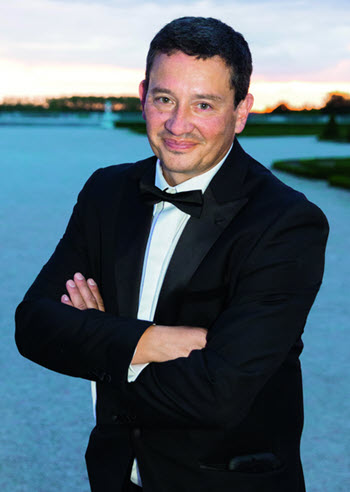
The presentations are not all Baroque and the opera productions are not all in historical stagings. The Spectacles’ creative team believes in presenting events appropriate to the surroundings, not just work that originated in Versailles. They have, though, learned the lesson of trying to recreate the exact conditions for Handel’s Music for the Royal Fireworks. “Nothing caught fire,” Brunner assured me, “but there was a massive storm. We forgot the basic lesson for French events: never count on the weather north of the River Loire. We did once try Beethoven’s Ninth Symphony, in the gardens on a Friday the 13th, but had to cancel because of torrential rain.”
Just as so much in the palace itself is in character but not necessarily authentic (for example, the parade of identical pseudo-medieval statues of kings that line the passage to the theater), Brunner mixes and matches his musical forces. Some he brings in from across Europe, but he tends not to rely on the pre-packaged programs of the Paris early-music scene. “When I want a project, it is hard to have to rely on others,” he says, citing spirited discussions with William Christie and Les Arts Florissants over the years (who nonetheless appear there several times this season).
Instead, four years ago he started Versailles’ own period-instrument orchestra and choir.
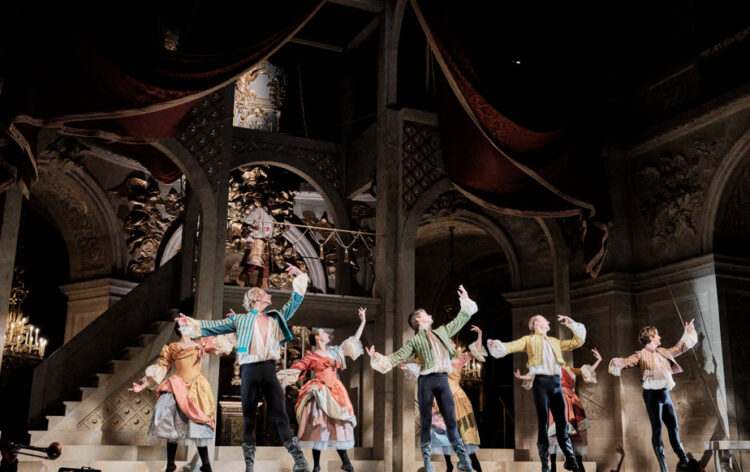
Brunner often uses the ancien régime as a starting point for repertoire rather than as a cultural era to recreate. Thus, the Spectacles series launched with a staging of John Corigliano’s post-modern opera The Ghosts of Versailles — based on a Beaumarchais play from the Figaro trilogy; Beaumarchais himself and Marie Antoinette are characters on stage — in a co-production with Upstate New York’s Glimmerglass Festival. A somber staging of Charpentier’s David et Jonathas, or a rollicking fun Magic Flute, sung in French, will always seem like a better fit. These are among the many audio and video performances, free to stream, on the Spectacles’ website.
The full array of operas in live performance for the anniversary year is extraordinary in its scope and quality of performers. The sheer scope of the offerings allows the creative leaders to take artistic risks. Earlier this spring, for example, the Spectacles’ performances of the French version of Gluck’s Orphée et Eurydice borrowed the Opéra Comique’s staging and invited early-music specialist Vaclav Luks to bring his orchestra, Collegium 1704, from Prague. The result was peculiar: Aurélien Bory’s stark and severe production, a misconception on many levels, accompanied by a Baroque orchestra playing Berlioz’s 1859 arrangement. To my ears and eyes, it was not a successful experiment. But it was worth trying in the context of such an extensive anniversary-year program.
One might think this entire deluxe endeavor is, once again, courtesy of a large grant from France’s Ministry of Culture. In fact, the whole Spectacles operation is financed by ticket sales and sponsors. (Tickets for the starry Bartoli-Malkovich pastiche cost up to €495, or about $530.)
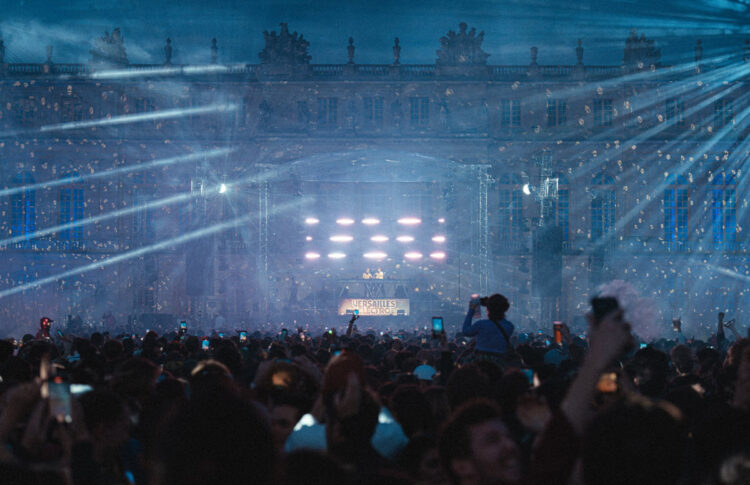
“I have 500 caring supporters,” Brunner says. “The opera leaves a deficit, but I sell millions of tickets for the fountains, balls, and concerts. Now I am investing in an academy for young singers. If you’re French, when you come to Versailles you know what you expect. If you are not French, you may have less ingrained preconceptions, so I want people to discover not just Lully and Rameau but Grétry and Zingarelli. It is about presenting the reality of an epoch for our own times.”
Simon Mundy has been writing about music for fifty years. Otherwise, he is a poet and novelist. He also advises the European Festivals Association and the Chamber Orchestra of Europe. He lives in Scotland.

